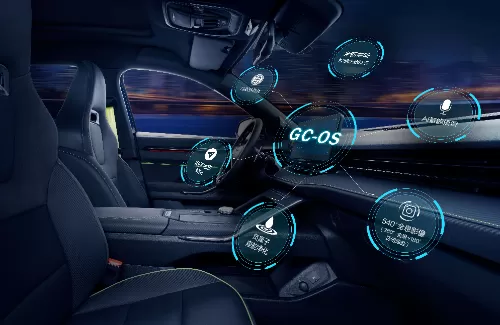Click to Get Big Benefits

From Passengers to Co-Pilots
Gone are the days of passive travel. Smart Cockpits turn every seat into a command station. Imagine your kids controlling a virtual tour guide that overlays dinosaur holograms onto passing landscapes, or your co-pilot live-streaming a cooking tutorial while the car handles the drive. These systems don't just entertain—they engage.
By integrating augmented reality (AR) windshields and AI-powered voice assistants, Smart Cockpits make every mile interactive. Ask about a mountain range, and the car projects its geological history onto the glass. Spot a weird roadside attraction? The system instantly serves up its backstory. It's like having Wikipedia, Netflix, and a theme park ride fused into your dashboard.
The End of “Are We There Yet?”
Let’s face it: long drives test sanity. Smart Cockpits fight back with personalized adventures. Built-in cameras detect yawns or restless fidgeting, triggering “micro-experiences.” Maybe the cabin lights dim as an astronaut voice announces, “Preparing for lunar landing,” while seats vibrate to simulate a rocket launch. For adults, a meditation mode might fill the cabin with forest sounds and lavender-scented air.
These systems even gamify travel. Earn points for spotting electric vehicle charging stations or correctly answering trivia about passing towns. Smart Cockpits turn monotony into a quest—where the prize is a happier, less screen-zombified family.
Your Car, Your Universe
Smart Cockpits don’t just adapt to you—they anticipate you. Biometric sensors adjust seat positions before you slouch. Mood-reading algorithms switch playlists when stress levels rise (goodbye, road rage). Want to practice Spanish? The cabin becomes a language lab, with AR subtitles labeling real-world objects outside.
The magic lies in seamless connectivity. Your car syncs with smartwatches, home devices, and even hotel reservations. Arrive at a campsite, and your Smart Cockpit projects a star map onto the roof, identifying constellations while preheating your portable coffee maker. It’s not just a drive; it’s a curated journey.
The Dark Horse: Shared Experiences
Here's the twist: Smart Cockpits are secretly social engineers. Multiplayer games let cars “battle” nearby vehicles on virtual racetracks (don't worry—speed limits stay intact). Stuck in traffic? Start a karaoke duel with strangers in adjacent lanes via anonymized audio links.
For solo drivers, holographic companions—think a stand-up comedian avatar or a celebrity-narrated audiobook—keep loneliness at bay. These systems blur the line between solitude and connection, making every trip feel like a shared adventure.
Is This Tech Safe?
Critics worry about distraction. Do floating holograms compromise safety? Smart Cockpits counter this with “focus modes” that limit immersive features when the driver's attention wavers. Tactile feedback through steering wheels or seats gently nudges minds back to the road.
The bigger question: Will we miss the simplicity of old-school road trips? Maybe. But Smart Cockpits aren't erasing spontaneity—they’re amplifying it. That quirky diner you’d have missed? The system flags it with a jingle and a retro neon AR sign.
Conclusion
The future of road trips isn't about escaping reality—it's about layering it with magic. Smart Cockpits will soon sync with smart highways, letting your car “talk” to passing landmarks. Imagine driving through Paris as your windshield animates the Eiffel Tower''s construction in 1889, or cruising Route 66 with Elvis holograms hitchhiking in the backseat.
One thing's certain: boredom is officially canceled. With Smart Cockpits, every road trip becomes a choose-your-own-adventure story—where the car isn't just transportation, but the protagonist. The open road just got a lot more open-ended.

All News
Others
- Terms of use
- Privacy Policy
